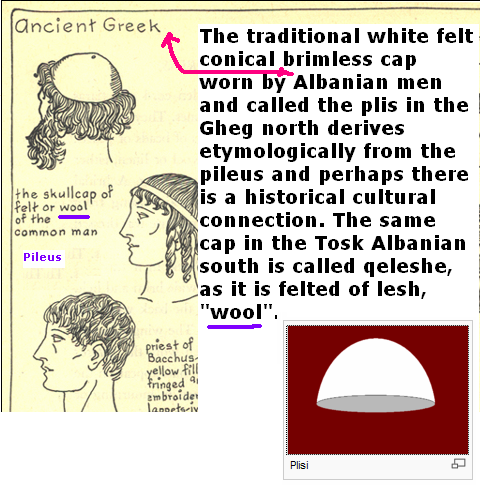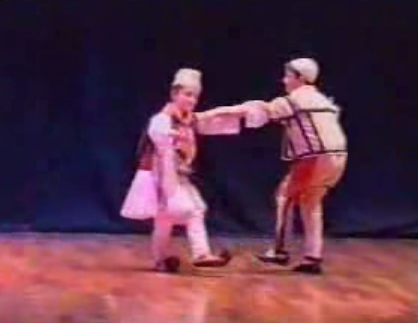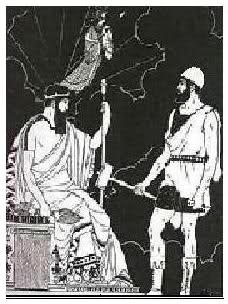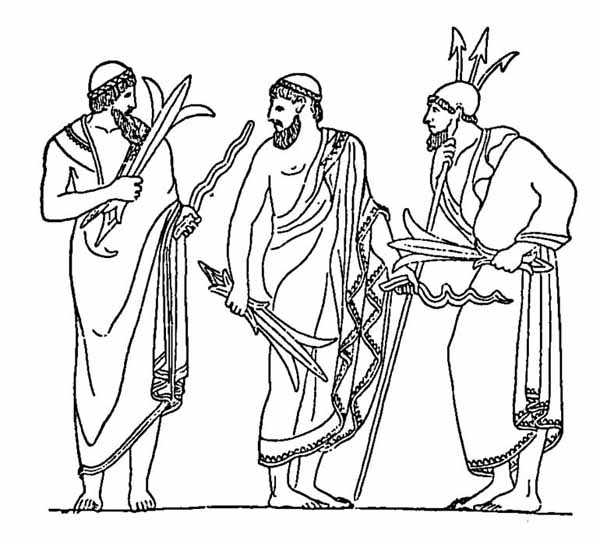Plis-Pileus
3 posters
ARBËNIA :: Forum :: History :: Historical photos
Page 1 of 1
 Plis-Pileus
Plis-Pileus
The pileus (plural, pilei), also pilleus or pilleum, was, in Ancient Greece, where it was the pilidion, and in Rome. a brimless felt cap somewhat similar to a fez. The pilleolus was a smaller cap, similar to a skullcap. It was especially associated with the manumission of slaves who wore it upon their liberation. The pileus became emblematic, especially popular in the 18th and 19th centuries (when it was often called a "liberty cap" or Phrygian Cap of liberty and freedom from bondage, appearing on statuary and on heraldic devices
This is the definition of an ancient hat that looks like this:
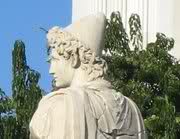
Dioskouroi

Odysseus

Hephaestus

Dioskouroi

Roman cap of the liberty
Albanian plis
The traditional white felt conical brimless cap worn by Albanian men and called the plis in the Gheg north derives etymologically from the pileus and perhaps there is a historical cultural connection. The same cap in the Tosk Albanian south is called qeleshe, as it is felted of lesh, "wool".
This is the definition for the Albanian plis(qeleshe) a cap worn only by the Albanians and none else. It looks like this:



The connection is obvious Albanians are the only who descended the ""Greek"" hat. How come the Albanians and not the ""Greek"" themselves.???
Because the Albanians are the Ancient ""Greeks"".
Last edited by ZEUS10 on Fri Mar 06, 2009 11:16 am; edited 3 times in total
 Re: Plis-Pileus
Re: Plis-Pileus
Here it is an Ancient """"Greek""" . Odysseus:

and here one of his descendants:

here it is Cadmos the Phoenician ""Greek"" of Thebe, the forefather of the Illyrian race:
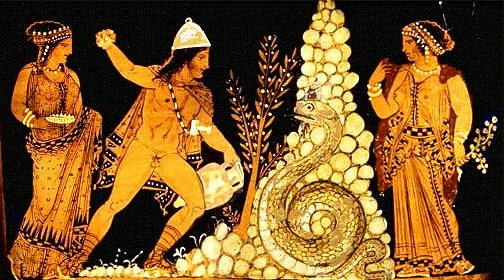
and here some his descendents:
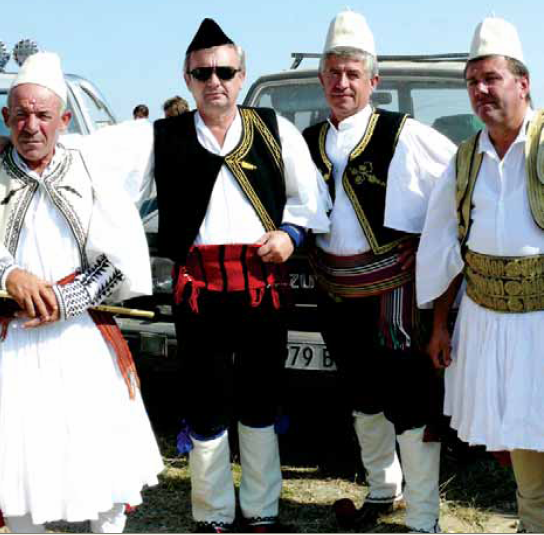
Its obvious that the people who are divided from more than 3000 years gap of time are wearing the same cap, ""ancient Greeks"" , Illyrians, Albanians whatever you name them. Just compare the photos.

and here one of his descendants:

here it is Cadmos the Phoenician ""Greek"" of Thebe, the forefather of the Illyrian race:

and here some his descendents:

Its obvious that the people who are divided from more than 3000 years gap of time are wearing the same cap, ""ancient Greeks"" , Illyrians, Albanians whatever you name them. Just compare the photos.
Last edited by ZEUS10 on Thu Mar 05, 2009 5:13 pm; edited 1 time in total
 Albanian Plis a symbol of the Liberty since old times
Albanian Plis a symbol of the Liberty since old times
PIʹLEUS or PIʹLEUM (Non. Marc. iii; pilea virorum sunt, Serv. in Virg. Aen. IX.616), dim. PILEʹOLUS or PILEʹOLUM (Colum. de Arbor. 25); (πῖλος, dim. πίλιον, second dim. πιλίδιον; πίλημα, πιλωτόν), any piece of felt; more especially, a skull-cap of felt, a hat.
There seems to be no reason to doubt that felting (ἡ πιλητική, Plat. Polit. ii.2 p296, ed. Bekker) is a more ancient invention than weaving [Tela], nor that both of these arts came into Europe from Asia.
From the Greeks, who were acquainted with this article as early as the age of Homer (Il. X.265) and Hesiod (Op. et Dies, 542, 546), the use of felt passed together with its name to the Romans. Among them the employment of it was always far less extended than among the Greeks. Nevertheless Pliny in one sentence, "Lanae et per se coactae vestem faciunt," gives a very exact account of the process of felting (H. N. VIII.48 s73). A Latin sepulchral inscription (Gruter, p648, n4) mentions "a manufacturer of woollen felt" (lanarius coactilarius), at the same time indicating that he was not a native of Italy (Lariseus).
The principal use of felt among the Greeks and Romans was to make coverings of the head for the male sex, and the most common kind was a simple skull-cap. It was often more elevated, though still round at the top. In this shape it appears on coins, especially on those of Sparta, or such as exhibit the symbols of the Dioscuri; and it is thus represented, with that addition on its summit, which distinguished the Roman flamines and salii, in three figures of the woodcut to the article Apex. But the apex, according to Dionysius of Halicarnassus, was sometimes conical; and conical or pointed caps were certainly very common.
In the Greek and Roman mythology different kinds of caps were symbolically assigned to indicate the occupations of the wearers. The painter Nicomachus first represented Ulysses in a cap, no doubt to indicate his sea-faring life (Plin. H. N. xxxv §22).º The woodcut on the following page shows him clothed in the Exomis, and in the act of offering wine to the Cyclops (Winckelmann, Mon. Ined. ii.154; Homer, Od. IX.345‑347). He here wears the round cap; but more commonly both he and the boatman Charon (see woodcut, p512) have it pointed. Vulcan (see woodcut, p726) and Daedalus wear the caps of common artificers.
Among the Romans the cap of felt was the emblem of liberty. When a slave obtained his freedom he had his head shaved, and wore instead of his hair an undyed pileus (πίλεον λευκόν, Diod. Sic. Exc. Leg. 31º p625, ed. Wess.; Plaut. Amphit. I.1.306; Persius, V.82). Hence the phrase servos ad pileum vocare is a summons to liberty, by which slaves were frequently called upon to take up arms with a promise of liberty (Liv. XXIV.32). The figure of Liberty on some of the coins of Antoninus Pius, struck A.D. 145, holds this cap in the right hand.
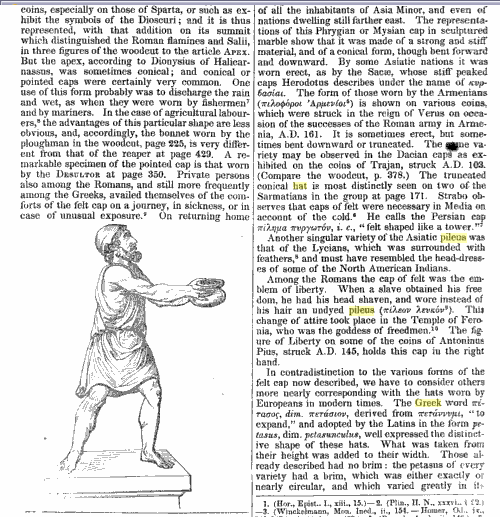
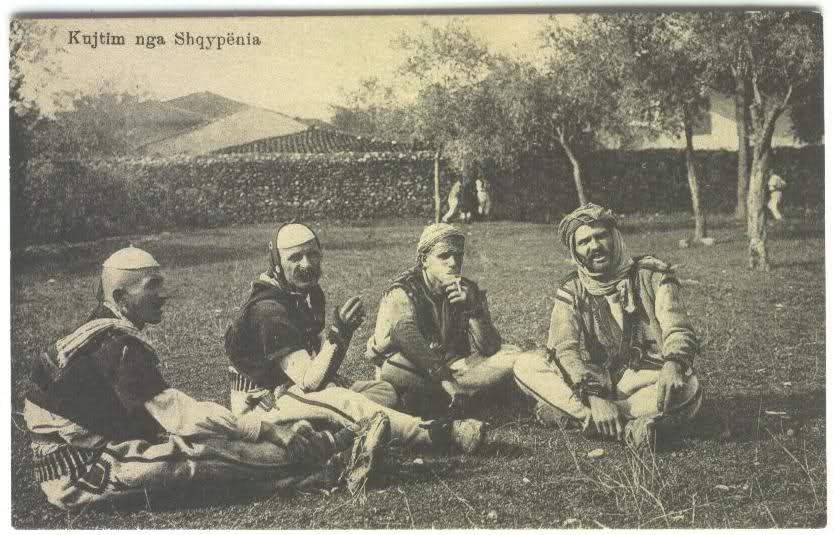
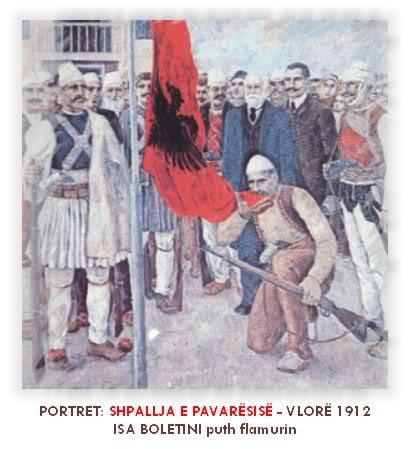
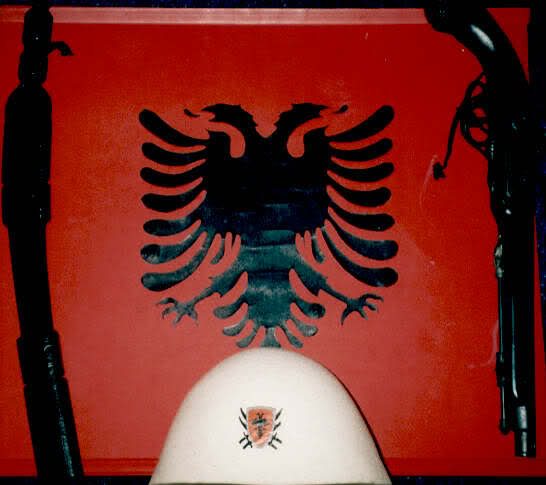
There seems to be no reason to doubt that felting (ἡ πιλητική, Plat. Polit. ii.2 p296, ed. Bekker) is a more ancient invention than weaving [Tela], nor that both of these arts came into Europe from Asia.
From the Greeks, who were acquainted with this article as early as the age of Homer (Il. X.265) and Hesiod (Op. et Dies, 542, 546), the use of felt passed together with its name to the Romans. Among them the employment of it was always far less extended than among the Greeks. Nevertheless Pliny in one sentence, "Lanae et per se coactae vestem faciunt," gives a very exact account of the process of felting (H. N. VIII.48 s73). A Latin sepulchral inscription (Gruter, p648, n4) mentions "a manufacturer of woollen felt" (lanarius coactilarius), at the same time indicating that he was not a native of Italy (Lariseus).
The principal use of felt among the Greeks and Romans was to make coverings of the head for the male sex, and the most common kind was a simple skull-cap. It was often more elevated, though still round at the top. In this shape it appears on coins, especially on those of Sparta, or such as exhibit the symbols of the Dioscuri; and it is thus represented, with that addition on its summit, which distinguished the Roman flamines and salii, in three figures of the woodcut to the article Apex. But the apex, according to Dionysius of Halicarnassus, was sometimes conical; and conical or pointed caps were certainly very common.
In the Greek and Roman mythology different kinds of caps were symbolically assigned to indicate the occupations of the wearers. The painter Nicomachus first represented Ulysses in a cap, no doubt to indicate his sea-faring life (Plin. H. N. xxxv §22).º The woodcut on the following page shows him clothed in the Exomis, and in the act of offering wine to the Cyclops (Winckelmann, Mon. Ined. ii.154; Homer, Od. IX.345‑347). He here wears the round cap; but more commonly both he and the boatman Charon (see woodcut, p512) have it pointed. Vulcan (see woodcut, p726) and Daedalus wear the caps of common artificers.
Among the Romans the cap of felt was the emblem of liberty. When a slave obtained his freedom he had his head shaved, and wore instead of his hair an undyed pileus (πίλεον λευκόν, Diod. Sic. Exc. Leg. 31º p625, ed. Wess.; Plaut. Amphit. I.1.306; Persius, V.82). Hence the phrase servos ad pileum vocare is a summons to liberty, by which slaves were frequently called upon to take up arms with a promise of liberty (Liv. XXIV.32). The figure of Liberty on some of the coins of Antoninus Pius, struck A.D. 145, holds this cap in the right hand.




 Re: Plis-Pileus
Re: Plis-Pileus
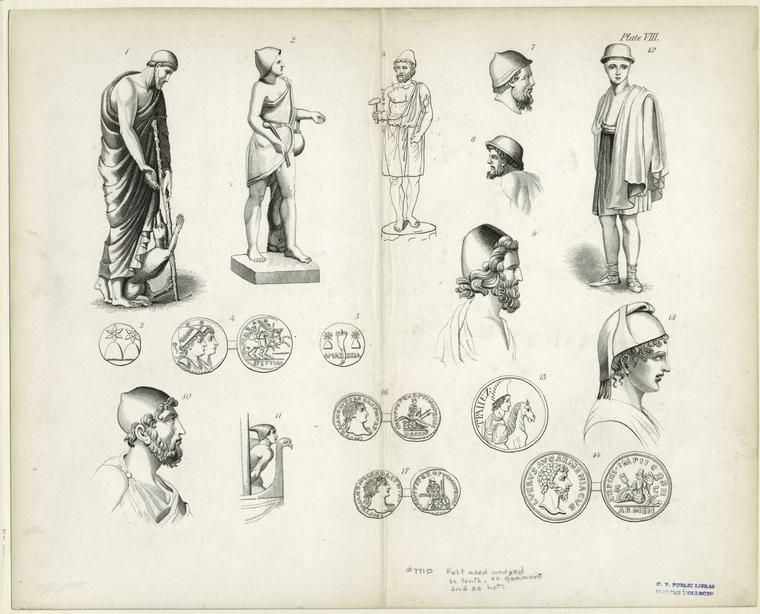
'Lashtesia e kapucit te bardhe, plisit' - http://www.buzuku.cg.yu/Arkivi/Buzuku14/Etnologji.htm

-donatedoy_f.jpg)
-donated_f.jpg)




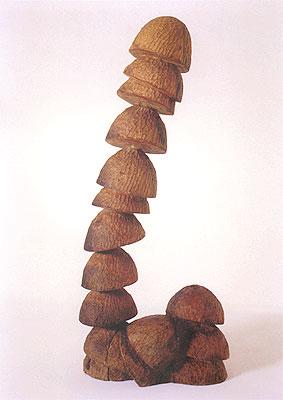
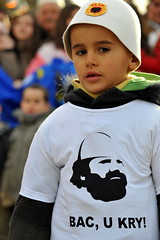
'Albanian traditional caps' - artistic piece

Socio- Junior Member

-

Number of posts : 24
Registration date : 2009-02-07
Points : 23
Reputation : 17
 Re: Plis-Pileus
Re: Plis-Pileus
Plisi?cfare valle simbolizon ???
Pike se pari per te kuptuar origjinen e kesaj shenje dalluese te kombit ton,duhet te gjejme preardhjen e fjales (plis).Me poshte po jap nje shembull se si duhet te kete marre kete emertim (plisi).
plis=pe+lesh=prej leshit
ose meqense i ngjan shume si forme levozhgave se lendes se lisit, mund te jete dhe keshtu;
plis=pe+lisi=prej lisi
shembullin e dyte e lidha jo rastesisht me drurin e lisit, por me historin ton te hershme, per vete faktin se te paret tane Pellazget, mbijetuan fale rezistences se drurit te lisit ne kohen e permbytjes se madhe, ata i detyreoheshin jeten ketij druri te forte, per kete arsye them se i thuren histori e rite fetare pagane.
Vete jam i mendimit se eshte me interes shum te madh te gjejm te verteten rreth PLISIT.
Pike se pari per te kuptuar origjinen e kesaj shenje dalluese te kombit ton,duhet te gjejme preardhjen e fjales (plis).Me poshte po jap nje shembull se si duhet te kete marre kete emertim (plisi).
plis=pe+lesh=prej leshit
ose meqense i ngjan shume si forme levozhgave se lendes se lisit, mund te jete dhe keshtu;
plis=pe+lisi=prej lisi
shembullin e dyte e lidha jo rastesisht me drurin e lisit, por me historin ton te hershme, per vete faktin se te paret tane Pellazget, mbijetuan fale rezistences se drurit te lisit ne kohen e permbytjes se madhe, ata i detyreoheshin jeten ketij druri te forte, per kete arsye them se i thuren histori e rite fetare pagane.
Vete jam i mendimit se eshte me interes shum te madh te gjejm te verteten rreth PLISIT.

sulioti- Regular Member

-

Number of posts : 70
Age : 43
Location : belgium
Registration date : 2009-02-10
Points : 22
Reputation : 22
ARBËNIA :: Forum :: History :: Historical photos
Page 1 of 1
Permissions in this forum:
You cannot reply to topics in this forum
 Portal
Portal Home
Home Gallery
Gallery Search
Search Register
Register Log in
Log in ZEUS10 Thu Mar 05, 2009 4:16 pm
ZEUS10 Thu Mar 05, 2009 4:16 pm
